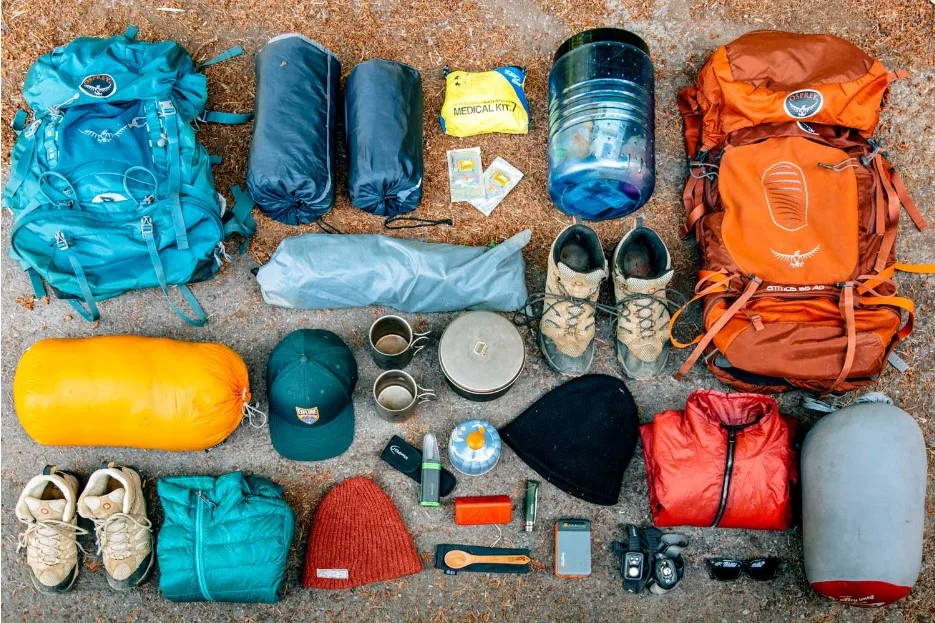A campground affords an unusual opportunity to get detached from the tensions of daily existence and appreciate the tranquility of wildlife. By purchasing the proper size dwellings, one of your most essential choices, selecting appropriate camping gear is crucial to truly loving the entire experience. With regard to how easy and convenient they are to set up, portable shelters are growing in prominence as possibilities. The right size must nevertheless be chosen to guarantee a relaxing and pleasurable camping trip that is adapted to your own requirements.
Size matters more than you might imagine when it comes to pop-up tents. Your pop up tent becomes a place of refuge as an alternative to home when you’re camping for the purposes of a place to live and storage spaces. and a cozy spot where you can sleep and decompress. Determine the number of campers you will be bringing along when picking an appropriate size, along with making sure you have capacity for both yourselves and your possessions.
Choosing the Right Pop-Up Tent Size for Your Camping Needs
Sizing Considerations:
Number of Campers: How many people will be sharing the tent is the most important consideration. The advertised capacity of a tent can give you a basic idea, but it’s usually a good idea to choose a tent that can hold one or two extra people than you had originally anticipated. When storing equipment or accommodating unanticipated visitors, this extra space can be quite useful.
Gear Storage: Consider the storage of your items within the tent while planning your setup. Make sure the tent has enough room for your belongings within it to fit them without feeling crowded, especially if you have backpacks, camping gear, or other items that need to be protected from the elements.
Comfort: For a pleasant camping trip, comfort is essential. The choice between a cozy tent with just enough space for sleeping and a roomy one where you can stand up is something to think about. Furthermore, some campers want separate sleeping and living spaces, which can necessitate a larger tent size.
Season and Climate: The size of the tent can also be affected by the season and temperature. You may prefer a tent with more space if the weather is chilly, so you can store your things inside and avoid moisture. A more airy, open tent would be preferred in the summer.
Activities: Take into account the pursuits you’ll be partaking in while camping. A smaller size might work if your primary uses for the tent are sleeping and storing stuff. A larger size with enough space to walk around comfortably is advised if you anticipate spending a lot of time inside the tent due to inclement weather or other circumstances.
Choosing the Right Size:
Finding a balance between comfort, usefulness, and personal preferences is necessary when choosing the proper tent size. It’s critical to carefully examine product specifications and to pay attention to the manufacturer’s offered layout and dimension diagrams. A comparison is essential because tent sizes might differ between brands and models.

Pop-Up Tents vs. Traditional Tents: Decoding Camping Gear Choices
Pop-Up Tents: Speed and Simplicity
Pop-up tents, popular among campers who prioritize convenience over all else because of their quick setup and simple construction, have developed a sizable following. These tents often include a spring-loaded frame that quickly unfolds and snaps into place, doing away with the requirement for intricate pole systems. This allows for more time for relaxation and exploration because even inexperienced campers can quickly prepare their shelters.
Pop-up shelters are appropriate for holidaymakers as well as individuals who need to be frequently on their feet because they are lightweight and affordable. In spite of their tiny size, which makes them straightforward to carry and fit in restricted spaces, they are particularly suited for uncomplicated hiking vacations.
Traditional Tents: Timeless Durability
Experienced campers and outdoor enthusiasts choose traditional tents because of their solid pole systems and diverse designs, which create a sense of dependability and longevity. Because of their well-known resilience to inclement weather, these tents are a reliable option for camping in a variety of settings. Traditional tents can accommodate different group sizes and personal preferences thanks to their vast choice of sizes and designs.
Traditional tents frequently offer more inside space and headroom, resulting in a cozy living space that campers may completely personalize. Awnings, vestibules, and extensions can be added to these tents for greater functionality, and they also provide broader customization choices.
Traditional tents, on the other hand, require a bigger time commitment for setup and can be trickier to put together, especially for novices. In addition to offering stability, the pole systems can be heavier and bulkier, which makes them less ideal for backpacking or simple camping.
Conclusion: A crucial step in creating a successful camping itinerary is determining the size of your pop-up tent. You may make an informed choice that assures a relaxing and happy camping vacation by taking into account elements like the number of campers, gear storage, comfort preferences, weather forecasts, and planned activities. A well-fitted tent offers a warm and pleasant environment in the midst of nature’s splendor, serving as both shelter and a memorable element of your camping experience.


